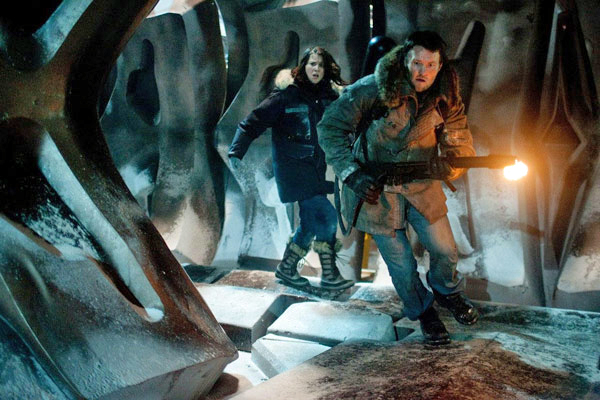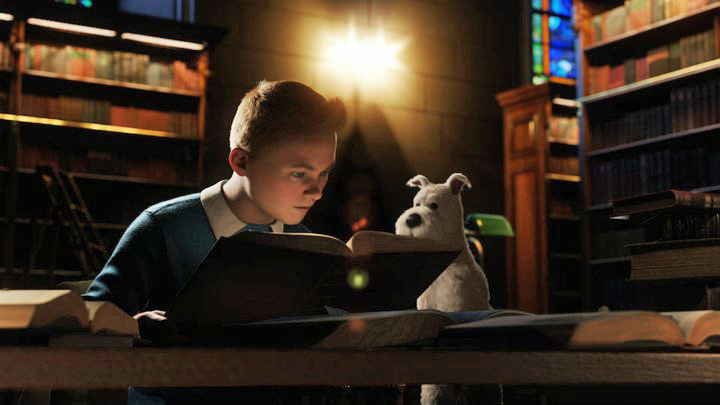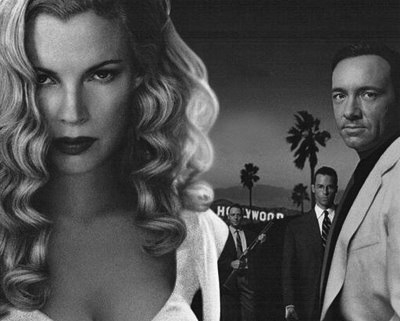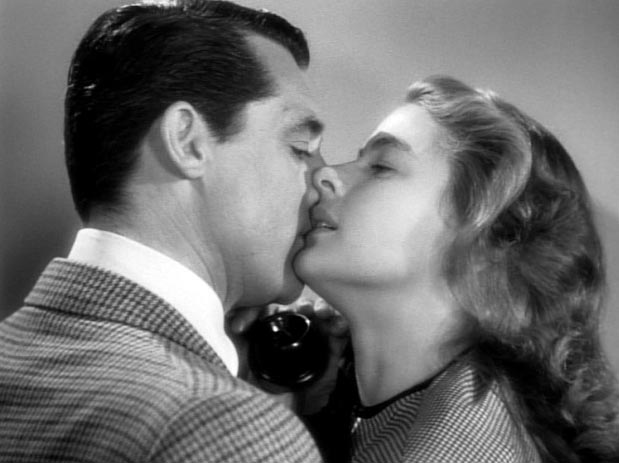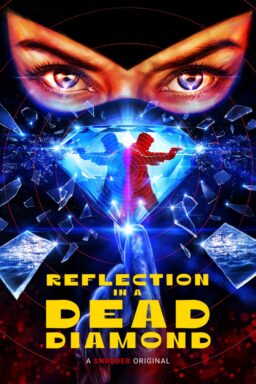Q. I was quite disturbed by “Starship Troopers,” which is obviously marketed at children. You mentioned the violence, but what about the nudity and sex? I saw it yesterday with my 11 year old son (with many other parents and kids) and was shocked by the shower scene. The nudity served no purpose in the storyline. I’m no prude and I don’t believe in censorship but they know kids are going to be watching. Everyone likes to point a finger and blame Hollywood for everything that’s wrong with society, but some criticism is fair. What were they thinking? (Bob Cauttero, Harrington Park, NJ)
A. The movie was rated “R” by the MPAA, which is a signal it is not appropriate for 11-year-olds. Yet the film is obviously pitched at young teenage boys. It’s hypocrisy: They take the “R” rating, knowing kids will find a way to see it, without or without an “adult guardian.” As for the shower scene: It was a tongue-in-cheek satire of similar scenes in countless other movies, except, of course, that in this future world it’s a co-ed shower. Just today a friend told me about seeing the movie in a packed house with “hundreds” of kids under 17, and seeing one parent telling his kids to cover their eyes during the shower scene, although of course they were free to drink in the gore, vivisection and violence. We live in a strange world, when female breasts are considered a more offensive sight than men being cut in two.
Q. Toward the end of “Devil's Advocate” there was a scene (quite popular with the crowd) in which Al Pacino as Satan repeats some of Keanu Reeves’ lines in Reeves’ voice. My wife and I disagree about whether this was actually Pacino imitating his co-actor, or if he was simply lip-synching to playback. Can you set the record straight? (Dominick Cancilla, Santa Monica, CA)
A. It’s even more devilishly complex. A Warner Brothers source says Al Pacino is not imitating Keanu Reeves’ voice nor is he lip-synching to a playback. Instead, Pacino spoke the original lines during production. Later Reeves, during post-production, looped the lines (spoke them, matching his voice to Pacino’s original lip movements).
Q. Regarding your Answer Man column about the controversial final shot in “Boogie Nights“: The director told you it was positively Mark Wahlberg, but you still thought it was a prosthesis. I have a theory. Wahlberg was interviewed online, and described the shot as “augmented by Hollywood smoke and mirrors.” He added: “I didn’t use a stand-in, but it’s a trick.” Since he is standing in front of a mirror in the scene, I’m wondering if perhaps the mirror was distorted like the old funhouse mirrors–the ones that can make you look taller or shorter. If the mirror was distorted in just the right place, and his clothes were tailored to offset the affect, it might create the effect, even though it would still be him that we were seeing. Note that he stood very still in the scene–any movement would have caused the distortion to be obvious. (Tom Crosley, San Jose, CA)
A. Too complicated (although there could be a big home market for a mirror with that ability). I’ve been trying to reconcile the apparent trickery with Paul Thomas Anderson‘s flat-out statement to me that the famous appendage was “absolutely, 100 percent real.” It would seem that someone had to be lying, but try this on for size: What if Anderson were telling the truth, but neglecting to add that the full monty, although real, was enhanced through special effects? Not a trick mirror, but perhaps through digital technology?
Q. At the end of “Boogie Nights,” in the montage, we get a throwaway laugh when Maurice Rodriguez (Luis Guzman) and his brothers unveil their nightclub sign to find out that the sign is spelled “Rodriquez”. It’s an unexpected laugh, and I wondered why Anderson bothered. My theory was that they ordered a Rodriguez sign, and it came back misspelled, just a happy accident. (Steven Sherman, Toronto)
A. The laugh wasn’t planned in advance. Director Paul Thomas Anderson says he misspelled the name in his screenplay, the sign was constructed that way, and when it arrived he decided to go with it.
Q. I just rented Howard Stern’s “Private Parts,” after having seen it twice in the theater, and noticed something new on the video version: There are now dates in the lower left corner of the screen. I guess people were trying to figure out the timeline of the movie? Do you know why they decided that providing dates would be necessary on the video version? (Nancy Mellen, Los Angeles)
A. Ann Schwartz of Paramount Home Video says there were no changes or additions to “Private Parts” in the transfer from film to video. What you saw in the theatrical release is what you’re seeing on the video.
Q. Have you heard whether or not Michael Apted will be making “42 Up?” (Nicholas Couch, Denver, CO)
A. You’re referring to what would be the sixth installment in the longest-running documentary in history. Every seven years, Apted revisits the same group of people, who we met for the first time when they were seven. We’ve seen them grow up on the screen–seen early promise fulfilled or not, seem problems disappeared or grow more troublesome, seen how in some cases personalities really were already largely shaped at seven. According to Jane Sindell, Apted’s agent at CAA, he does indeed intend to film another installment, and will shoot in January and February of 1988.
Q. Is it just me or was the John C. Reilly character, Mark Wahlberg’s main buddy, doing a Quentin Tarantino impression all during “Boogie Nights”? He gives an interview at one point during the movie explaining the use of violence in films that I could have sworn was word for word from Tarantino’s comments after “Pulp Fiction” won the Cannes Film Festival. (Joseph J. Elizondo, Las Vegas)
A. Hard to say whether it’s a riff on Tarantino, or whether that’s a prevailing mode of speech in Los Angeles showbiz circles.
Q. I was appalled when I read the story summary of the sequel to “Babe,” called “Babe in Metropolis.” It involves a bank threatening foreclosure on the Hoggett farm, and the pig traveling to a city to demonstrate his shepherding skills once again. The joy of “Babe” was watching the pig triumph against “all odds.” This contrived plot will likely ruin the spirit of the original. Unless the Metropolis that Babe visits is anything like Fritz Lang’s, I don’t see any potential. What was James Cromwell thinking when he signed up for “Babe in Metropolis?” (Rhys Southan, Richardson, Texas)
A. He was probably thinking that his contract required him to. The problem the sequel will have to address s that now we what Babe can do, and then we didn’t. So suspense is replaced by impatience. If they have Babe visit a city that looks like the sets in Lang’s silent classic, however, the film would have the distinction of being two unnecessary sequels instead of only one.
Q. The Oscars should be done like the Cable ACE awards: All judges have to view all entries at the same time and can’t discuss them with each other. (Luigio Salmo, New York City)
A. What, and eliminate politics, cronyism and guesswork? The Academy hasn’t even gone so far as to require that voters actually see the films they vote for.

